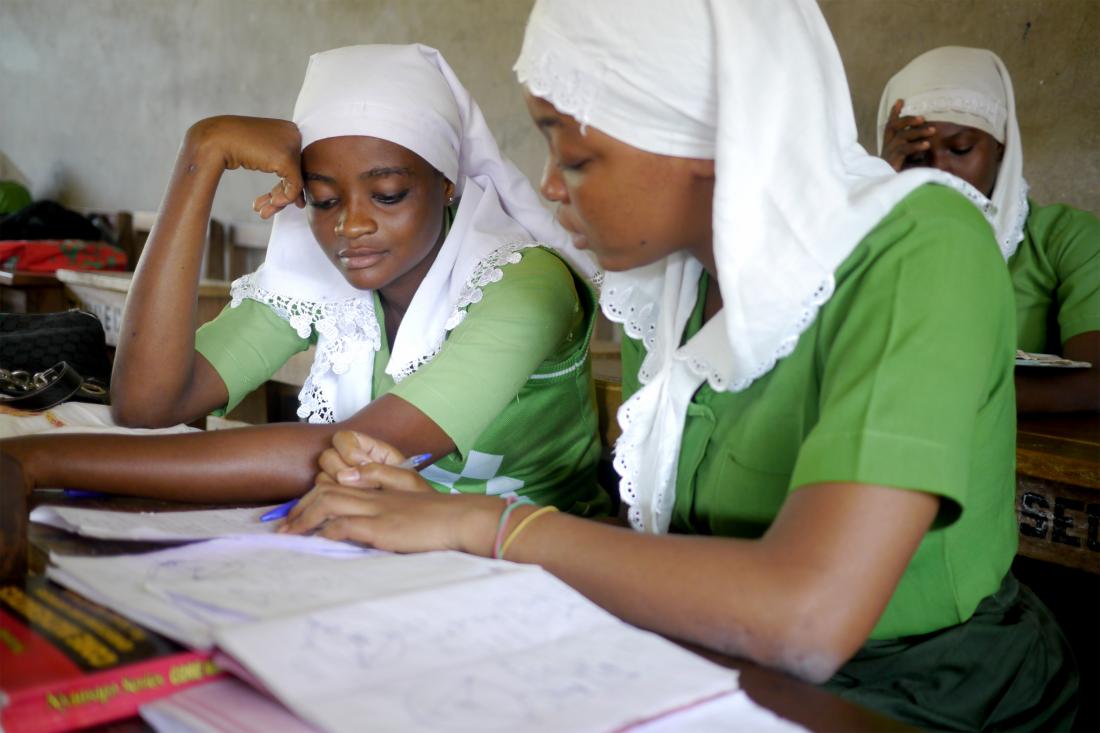Guidance and Information for Improved Education Decisions in Ghana
Although attending and completing a high quality secondary school program can propel students towards greater success in the job market, many students do not enroll in secondary school. Further, some of those who do enroll either drop out or attend low quality secondary schools, even when they qualify for higher performing options. Researchers in Ghana conducted a randomized evaluation to test whether a program informing students and parents about the secondary school choice process and school quality helped students make more strategic decisions about which schools to attend, and whether these choices led to better educational outcomes for students. Results indicated that increasing parents’ access to this information increased parental involvement in students’ educational choices.
Policy issue
Although attending and completing a high quality secondary school program can propel students towards greater success in the job market, many students do not enroll in secondary school. Further, some of those who do enroll either drop out or attend low quality secondary schools, even when they qualify for higher performing options. Researchers in Ghana conducted a randomized evaluation to test whether a program informing students and parents about the secondary school choice process and school quality helped students make more strategic decisions about which schools to attend, and whether these choices led to better educational outcomes for students. Results indicated that increasing parents’ access to this information increased parental involvement in students’ educational choices.
Context of the evaluation
Students leaving Ghanaian junior high schools (middle schools) must decide which senior high school (secondary school)—if any—they will attend. Together with their families, students often make this complicated decision without having either access to or a complete understanding of all the facts about the school selection and admissions process.
Before entering secondary school, students submitted a ranked list of up to four secondary schools that they would have liked to attend. The Computerized School Selection and Placement System (CSSPS) used this ranking, together with their performance on the Basic Education Certification Exam (BECE), to place students in senior high schools. However, students made their selection of schools with only very limited information on schools’ admission standards, academic performance, and fees. This information deficit was especially pronounced for marginalized students.

Details of the intervention
Researchers partnered with Innovations for Poverty Action (IPA) to conduct a randomized evaluation assessing the impact of providing information about the secondary school application process to students and parents on students’ educational outcomes. Researchers randomly assigned 900 junior high schools to one of three groups:
• Information to students: Students in the first group attended an in-school information session, in which they: (1) received booklets with information about application strategies and the quality and admissions criteria of all senior high schools in the region; (2) watched a video that dramatized and explained the school selection process; and (3) participated in a question and answer session with a trained enumerator.
• Information to students and parents: Students in the second group of schools received the same information booklets and attended the same information sessions, but schools in this group also invited parents to a workshop about the secondary school application process. During this workshop, parents watched the same video and also participated in a question and answer session.
• Comparison: Students and parents at schools in this group did not receive any new information.
Researchers surveyed 5,272 parental guardians in 433 of the study schools. Since simply surveying people on a given topic can sometimes change behavior, researchers only administered the survey to a random half of all participants. Future analysis of administrative data will use the entire 900 school sample.
Results and policy lessons
Results indicated that access to information on school performance and the application process increased parents’ involvement in their students’ secondary school choice.
Likelihood of seeing information about school selection: Both the information-to-parents and information-to-students interventions increased the likelihood that guardians saw a video or booklet with information about school selection. Thirty-one percent of guardians in the information-to-parents group reported seeing a booklet, compared to 29 percent in the information-to-students group, and 19 percent in the comparison group. Fourteen percent of guardians in the information-to-parents group reported having seen a video, compared to only four percent of guardians in the comparison group.
Guardians’ involvement in school selection: The information-to-parents intervention increased guardians’ involvement in the school selection process. Guardians in this group were more likely to report that they or another guardian helped with school selection (55 percent, compared to 47 percent in the comparison group), that a guardian had the final vote in the decision (47 percent, compared to 40 percent in the comparison group), and that a guardian was the sole decision maker (29 percent, compared to 24 in the comparison group). In addition, 31 percent of these guardians knew the order of their students’ choices, relative to a base of 25 percent among guardians of students in the comparison group.
Further analysis will use a combination of survey and administrative data to evaluate whether these interventions improve students’ welfare and academic outcomes. Researchers will also measure the impact of the information program on students’ likelihood of attending secondary school, the quality of secondary schools they attend, their likelihood of taking the certification exam and their performance on that test, and whether they go on to enter university.
Ajayi, Kehinde F., Willa H. Friedman, and Adrienne M. Lucas. 2017. “The Importance of Information Targeting for School Choice.” American Economic Review: Papers & Proceedings, 107(5): 638-643.
